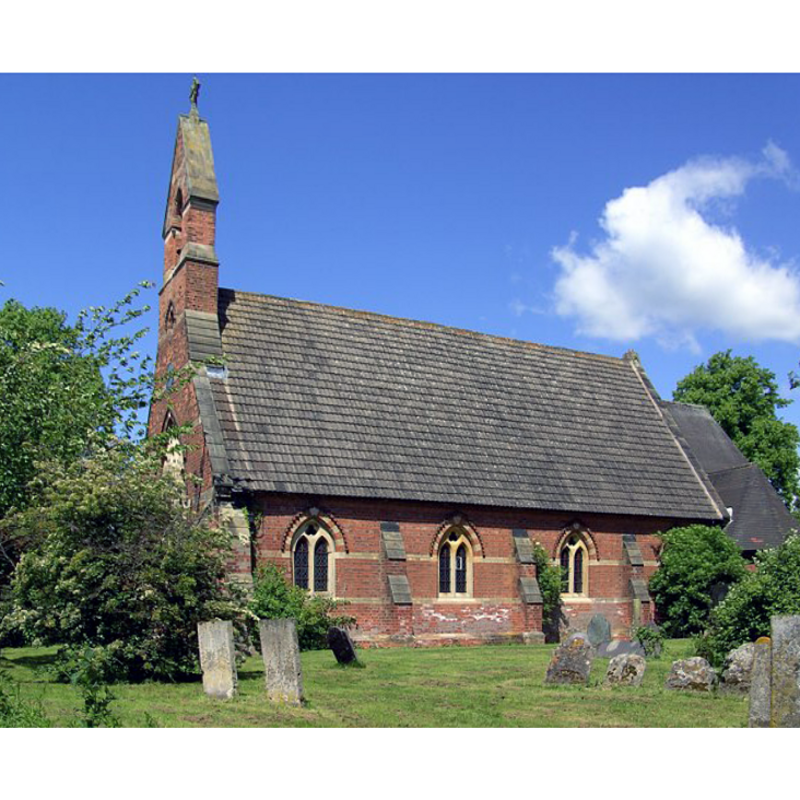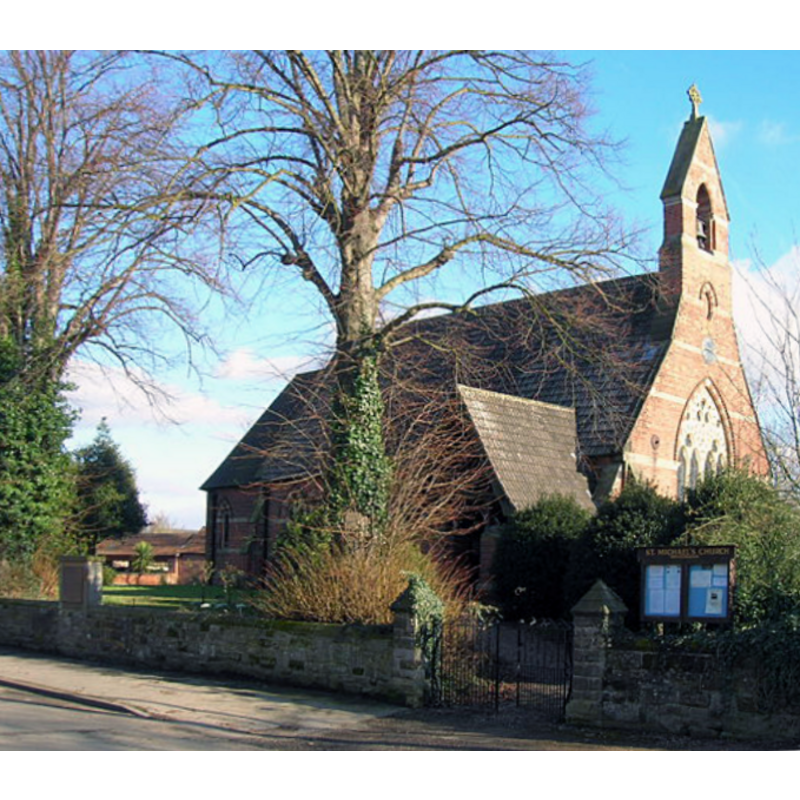Hoveringham

Image copyright © [in the public domain]
PD
Results: 5 records
design element - architectural - column - 4
design element - motifs - chevron
view of church exterior - southwest view
Scene Description: St Michael's parish church, Hoveringham; originally 12thC; chiefly re-built mid-19thC
Copyright Statement: Image copyright © derek dye, 2010
Image Source: digital photograph taken 30 May 2010 by derek dye [www.geograph.org.uk/photo/1922561] [accessed 27 December 2020]
Copyright Instructions: CC-BY-SA-3.0
view of church exterior in context - northwest view
Scene Description: St Michael's parish church, Hoveringham; originally 12thC; chiefly re-built mid-19thC
Copyright Statement: Image copyright © JThomas, 2010
Image Source: digital photograph taken 13 March 2010 by JThomas [www.geograph.org.uk/photo/1758431] [accessed 27 December 2020]
Copyright Instructions: CC-BY-SA-3.0
INFORMATION
FontID: 05335HOV
Object Type: Baptismal Font1?
Church/Chapel: Church of St. Michael (orig. from Thurgarton Priory church)
Church Patron Saints: St. Michael (St. Peter was the patron saint of the priory church)
Church Location: [NB: address and coordinates are for the priory] Priory Rd, Thurgarton, Nottingham NG14 7GR, UK
Country Name: England
Location: Nottinghamshire, East Midlands
Directions to Site: Hoveringham is located about 18 km ENE of Nottingham, just of A612; Thurgarton is about 2 km NW of it, off (W) the Nottingham road.
Ecclesiastic Region: Diocese of Southwell and Nottingham
Historical Region: Hundred of North Erpingham
Font Location in Church: Inside the church
Date: ca. 1186?
Century and Period: 12th century (late)?, Late Norman? / Transitional?
Church Notes: Hoveringham's parish church originally 12thC(?), re-built 1865 -- for details of the tympanum in this church see http://www.nottshistory.org.uk/articles/tts/tts1903/summer/hoveringham.htm [accessed 27 December 2020]
Font Notes:
Click to view
There was a priest and a church here for the 1086 Domesday Book. Traces of that church were found in the 1950s. Bond (1908) describes a series of "what look like diminutive fonts", some "too large for use as hand fonts. One is placed in Hoveringham Church [...], and is used as a font. It was found among the ruins at Thurgarton Priory (its supports are modern). It is much too small to have been a font originally; and, indeed, up to 1897, it had no drain; probably it was a holy water stoup." Bond's illustration (ibid.) shows a block that is square at the bottom -the lower basin- but has been rounded at the middle and upper basin leaving four rounded columns at 90-degree angles corresponding to the corners of the square; the basin sides between the columns are ornamented with panel-like frames; on the lower sides of the basin, the square part, there are remains of its original ornamentation, a row of chevrons; the chamfer of the underbowl appears plain. The modern base mentioned by Bond [cf. supra] is a round pedestal with some mouldings at the lower end of the stem, and a polygonal lower base, both otherwise plain. If this object dates from the original building of the Priory, it would belong to the end of the 12th century, probably between 1185 and 1187. Baylay (1903), then vicar of St Michael's, noted that this basin was originally a holy-water stoup without "a water-drain until six years ago" [i.e., 1897]. Baylay (ibid.) adds that the object "was evidently never made for a little village church. In all probability what happened was this: The font having been destroyed by the Parliamentarian troops during the siege of Newark [...], the Hoveringham people, at the restoration of Charles II., looked for a substitute, and finding this bowl (of Early English date) among the ruins of Thurgarton Priory, they fitted it on some pieces of Norman work with zig-zag mouldings, and set it up, with a metal bowl inside, to serve as font. The rebuilders turned it out, and it stood in Mr. Baines' garden until 1897, when it was restored to its holy use, and a new supporting puillar added; the old support, whatever it was, having perished." Described in Guilford (1927) as a "patchwork of the E[arly] E[nglish] and Norman periods". Cox (1912) writes: "The old font was rescued from the Ferry Inn in 1897 and replaced in the church ; it is described by Mr. Guilford as "a patchwork of the E[arly] E[nglish] and Norm[an] periods, and appears to have been originally a holy-water stoup." Cox (1912) mentions a large detached stoup being used as a font in this church. In Pevsner & Williamson (1979): "Primitive Norman, but obviously not in its original state." The Nottinghamshire Parish Church Database [http://www.oldnotts.co.uk/data/churchdatabase/stmatthew.htm] [accessed 25 March 2009] confirms the survival of the old font. The entry for Hoveringham St Michael's in Historic ngland [Listing NGR: SK6984846625] notes: "Parish church. C12 tympanum, rebuilt 1865 by William Knight [...] The inner doorway has C12 arched tympanum over, decorated with St. Michael, 2 dragons, the Agnus Dei, and further figures and beasts. [...] C12 font, the base decorated with zigzag and standing on C19 plinth."
COORDINATES
Church Latitude & Longitude Decimal: 53.035278, -0.969722
Church Latitude & Longitude DMS: 53° 2′ 7″ N, 0° 58′ 11″ W
UTM: 30U 636134 5878122
MEDIUM AND MEASUREMENTS
Material: stone
Font Shape: cylindrical (mounted) (with square lower basin)
Basin Interior Shape: round
Basin Exterior Shape: round (square at the bottom)
Drainage Notes: a drain was made in 1897 [cf. FontNotes]
REFERENCES
Baylay, Atwell M.Y., "Summer excursion 1903: Hoveringham church", 7 (1903), Transactions of the Thoroton Society, 1903
Bond, Francis, Fonts and Font Covers, London: Waterstone, 1985 c1908
Cox, John Charles, Nottinghamshire, London: Allen, 1912
Guilford, Everard Leaver, Nottinghamshire, London: Methuen, 1927
Pevsner, Nikolaus, Nottinghamshire, Harmondsworth: Penguin Books, 1979

